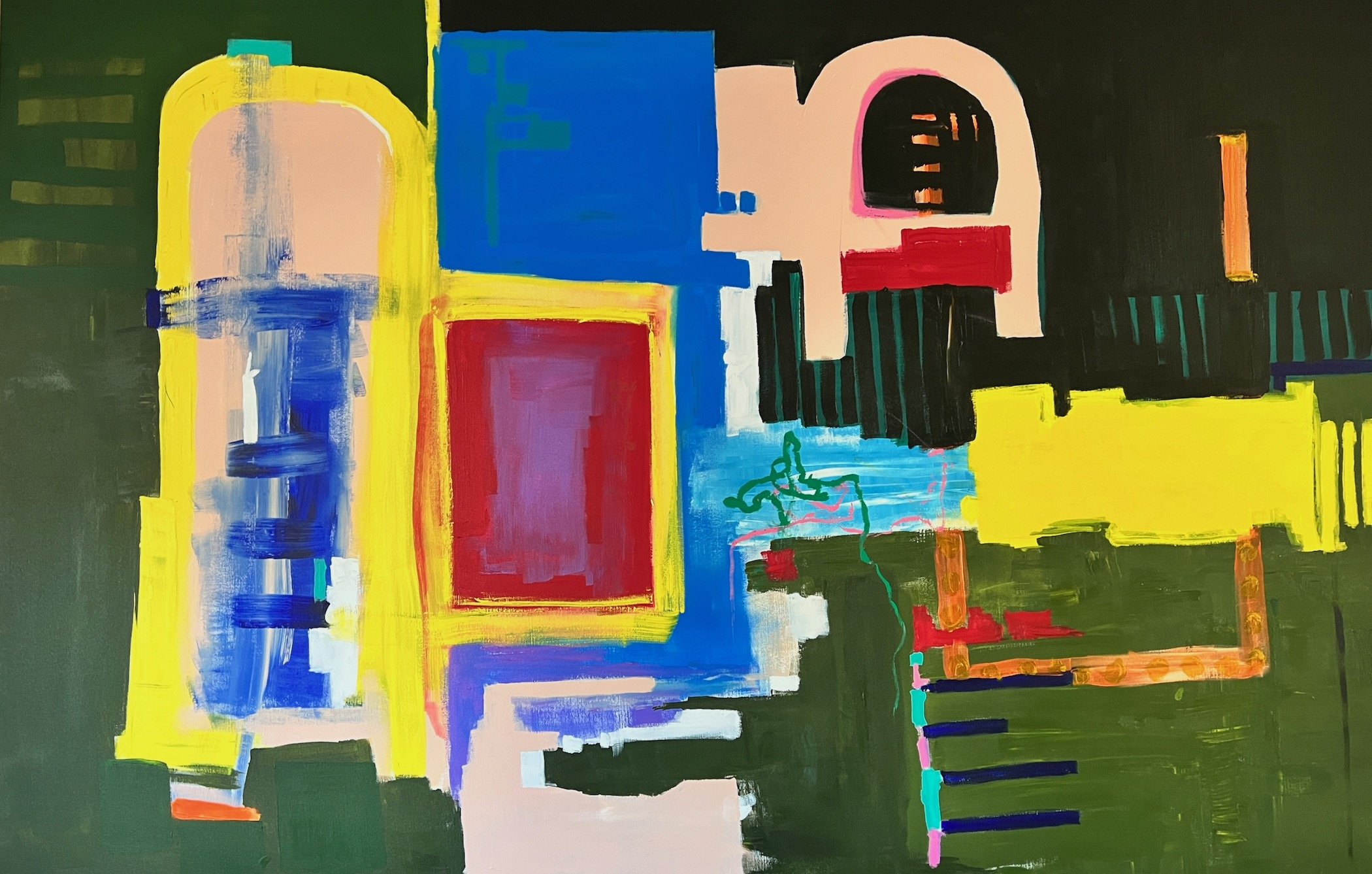Abstract vs. Figurative
My mind tends to lean toward the abstract. In a gallery or museum, I naturally gravitate towards abstract art before exploring figurative pieces. However, my own artwork is figurative and surreal, blending elements of abstraction into my creations. I find a deeper, more personal connection in figurative work due to the immediate recognition and connection with figure movement.
Art has the power to evoke emotions, spark conversations, and transform spaces. The choice between figurative and abstract art is a deeply personal decision that reflects the taste, preferences, and even philosophical inclinations. My debate over which style is more attractive – figurative or abstract – to me, has been a longstanding personal conversation. Let's delve into the nuances of each and explore what makes them compelling to collectors.
In my own space, oil on canvas - 2021
Figurative Art: Capturing the Familiar
Figurative art, rooted in representation, captures the tangible and recognizable elements of the world. From lifelike portraits to vivid landscapes, figurative art speaks a language of familiarity and realism. For collectors drawn to narrative and storytelling, figurative pieces offer a tangible connection to the artist's vision. The human form, everyday objects, and recognizable scenes provide a sense of relatability, making figurative art a popular choice for those seeking a direct and accessible aesthetic experience.
The Allure of Figurative Art:
1. Emotional resonance: Figurative art often carries a strong emotional resonance, as viewers connect with the depicted subjects or scenes on a personal level.
2. Storytelling: Collectors who appreciate a narrative and storytelling in art find figurative pieces particularly engaging, as they tell stories through recognizable imagery.
3. Technical skill: Figurative art often showcases the artist's technical prowess, highlighting their ability to capture realistic details and nuances.
The Door, acrylic and oil stick on canvas - 2023
Abstract Art: The Language of the Sublime
On the flip side, abstract art challenges conventional representation, relying on shapes, colors, and forms to convey meaning. Abstraction invites viewers to explore the intangible and tap into their own interpretations. For many of us seeking a more open-ended and thought-provoking experience, abstract art offers a limitless playground of imagination and emotion. The absence of clear subject matter encourages viewers to engage with the piece on a more visceral and cerebral level.
The Allure of Abstract Art:
1. Interpretive freedom: Abstract art grants people the freedom to interpret and engage with the artwork based on their own experiences and perspectives.
2. Emotional impact: Abstract pieces can evoke powerful emotions through color, composition, and form, offering a more subjective and personal connection.
3. Aesthetic experimentation: Collectors drawn to innovation and aesthetic experimentation often appreciate abstract art for its ability to push boundaries and challenge traditional norms.
The Dilemma: A Matter of Personal Taste
Ultimately, the choice between figurative and abstract art comes down to the person's individual taste, preferences, and the emotions they seek to elicit from their art collection. Some people may find solace in the familiar and relatable narratives of figurative art, while others may thrive on the open-ended possibilities and emotional impact of abstract pieces.
In the vibrant world of art collecting, the dichotomy between figurative and abstract art remains a captivating dialogue. The allure of each style lies in its unique ability to resonate with person on different levels. Whether drawn to the storytelling of figurative art or the interpretive freedom of abstraction, collectors contribute to the rich tapestry of the art world, shaping the narrative of what is considered valuable, meaningful, and attractive in their personal galleries. Ultimately, the beauty of art lies in its diversity, and the dynamic interplay between figurative and abstract pieces adds depth and richness to the ever-evolving world of artistic expression.
But how does this affect me as an artist who creates both? Read it next Tuesday.

